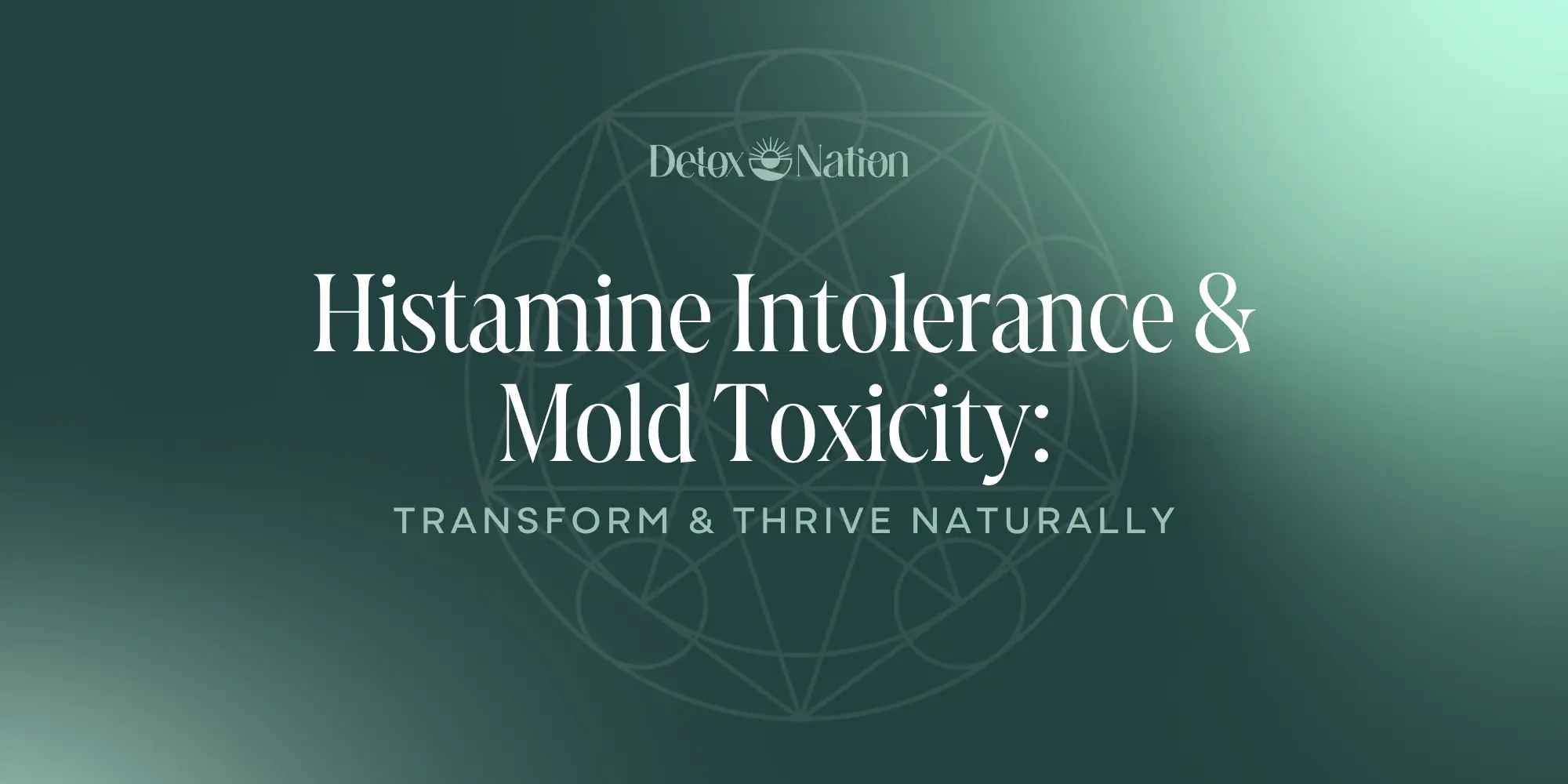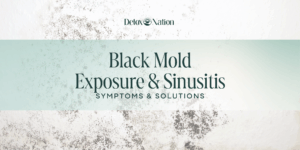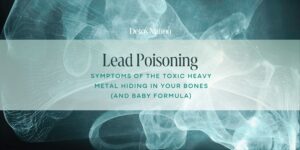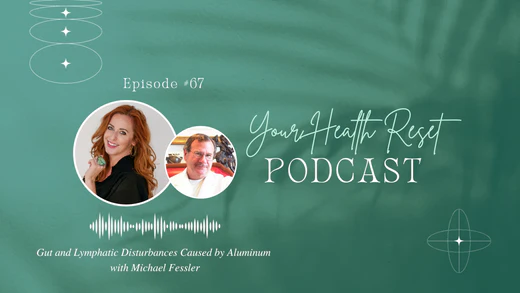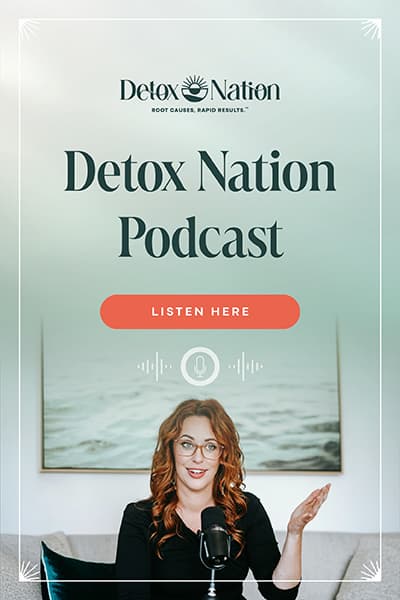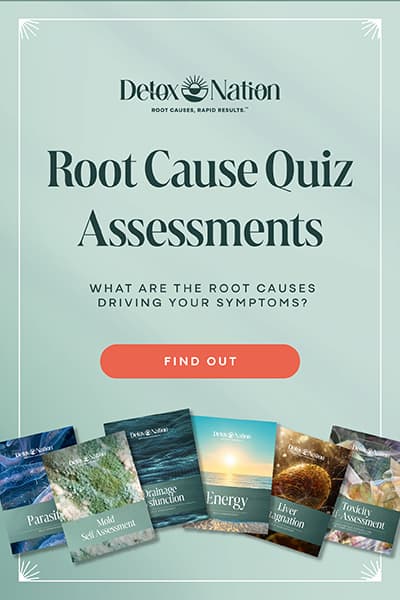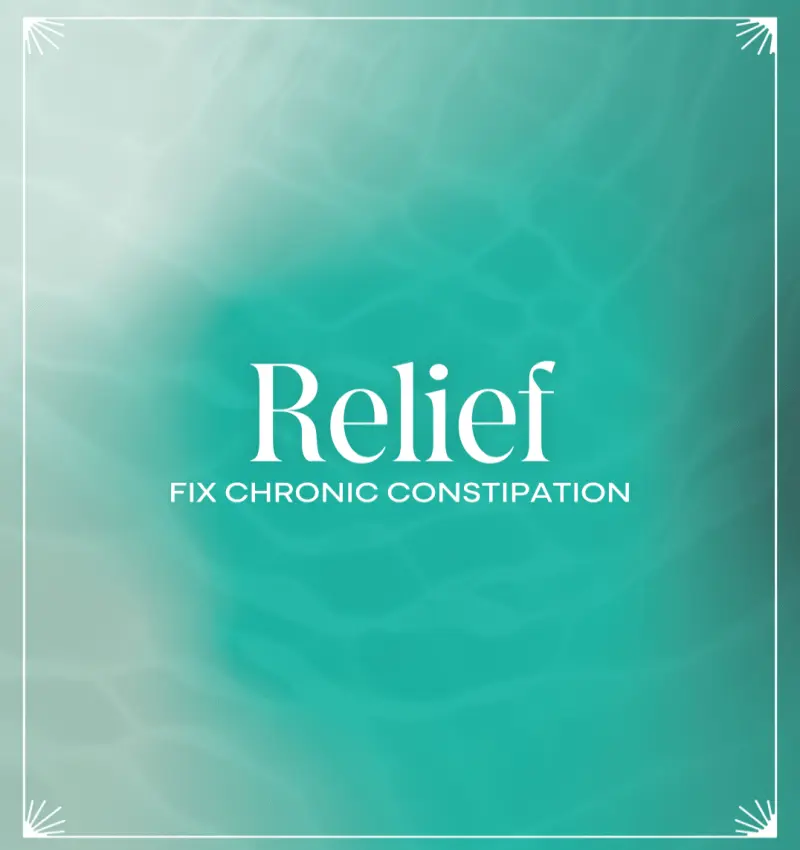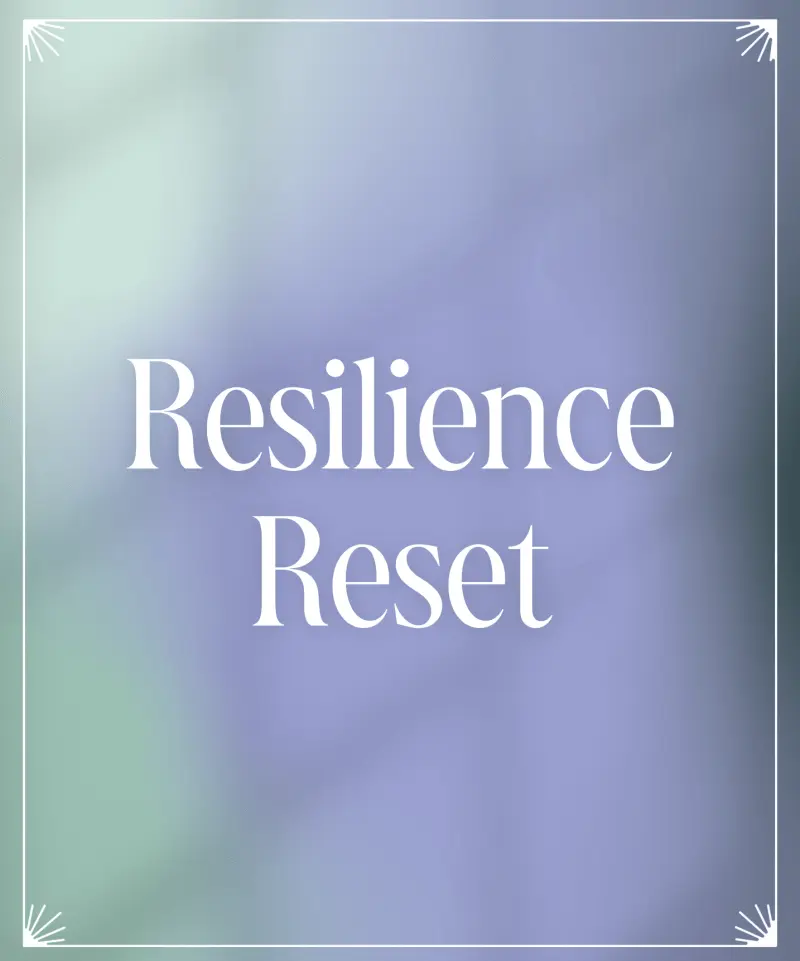You used to tolerate wine.
Now it gives you heart palpitations and a splitting headache—after two sips.
Your skin breaks out from your favorite laundry detergent.
You can’t handle leftovers without bloating.
And your go-to health foods? Suddenly they’re public enemy number one.
You’ve probably wondered: “How did I become allergic to life?”
I hear this all the time.
You’ve become a detective in your own kitchen, bathroom, and brain.
But no matter how much you eliminate, filter, or avoid, the symptoms creep back in—rashes, anxiety, fatigue, insomnia, food reactions, chemical sensitivity, and that charming 3 a.m. wake-up that’s now part of your nightly routine.
If your body is reacting to everything, it may be because your immune system is overwhelmed, your detox systems are jammed, and your mast cells (AKA mastocytes) are stuck in panic mode.
And one of the biggest, sneakiest culprits?
Mold—and the invisible poisons it leaves behind.
If you’ve been told it’s all in your head, that your labs are “normal,” or that you just need to relax, I’m going to gently call BS on that.
What’s happening is complex—but it’s not mysterious once you understand the connections:
Key Takeaways:
- Mold exposure impacts your immune system, gut, and mitochondria
- That leads to histamine overload and enzyme suppression
- Your immune system hits the panic button, over and over
- Cue MCAS: Mast Cell Activation Syndrome—when your body starts reacting to… basically everything
In article, I’ll walk you through how mold can trigger histamine intolerance and MCAS—and more importantly, what you can do about it. (This is fixable!)
Ready? Let’s break this down together.
Ready to start healing?
Find out where you are in the process—and what your body’s trying to tell you.
Take the free mold assessmentMold 101 – Not Just a Respiratory Problem
Let’s clear something up right now: mold isn’t just that weird black smear in the bathroom that gets scrubbed with vinegar and forgotten.
If you’ve been exposed to a water-damaged structure—whether it’s a leaky apartment, a school, a workplace, a car, a storage unit, or your dream house—you’re likely dealing with way more than a little mildew.
Mold spores are just the beginning.
When mold grows indoors, especially in damp, poorly ventilated spaces, it releases a nasty cocktail of:
- Spores – which you inhale every time you breathe
- Fragments – broken bits of fungal structures that are even more immunogenic than spores
- Mycotoxins – the chemical weapons of the mold world
And this last one? That’s where things get serious.
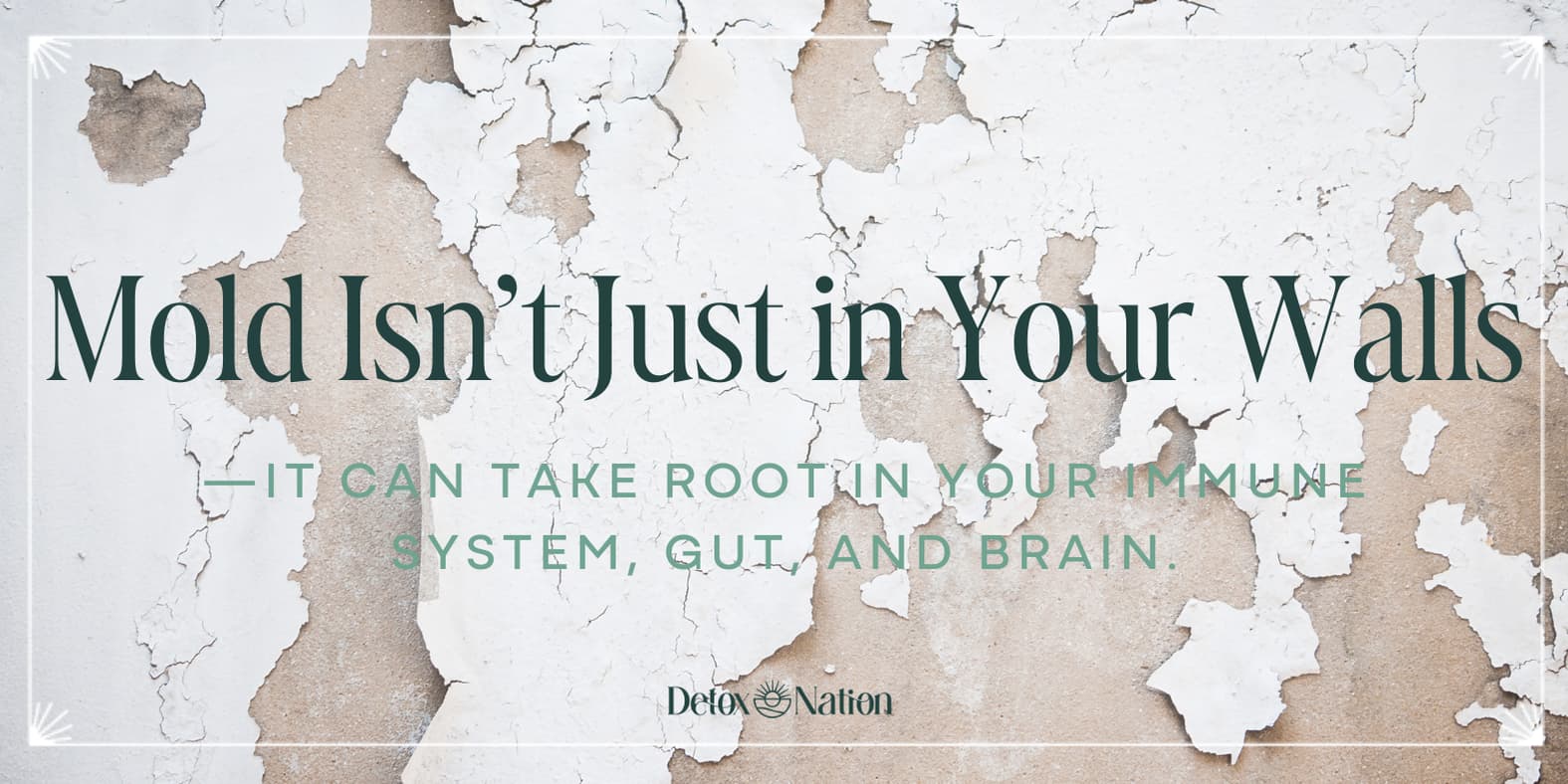
Mycotoxins: Microscopic Mayhem
These aren’t just toxins—they’re fat-soluble, neurotoxic, and immunotoxic compounds.
Think of them like microscopic poison darts.
They don’t get filtered out easily, they hide in your fat, brain, and organs, and they disrupt your body’s ability to function normally.
And exposure is cumulative, so every exposure builds on the last.
Some of the most common offenders include:
- Ochratoxin A (Aspergillus, Penicillium) – kidney and immune toxicity
- Trichothecenes (Stachybotrys) – suppress protein synthesis, damage the gut
- Aflatoxins (Aspergillus flavus) – liver damage, carcinogenic
- Gliotoxin – causes immune suppression and cell death
And if you’re still living, working, or sleeping in that environment?
The hits just keep coming.
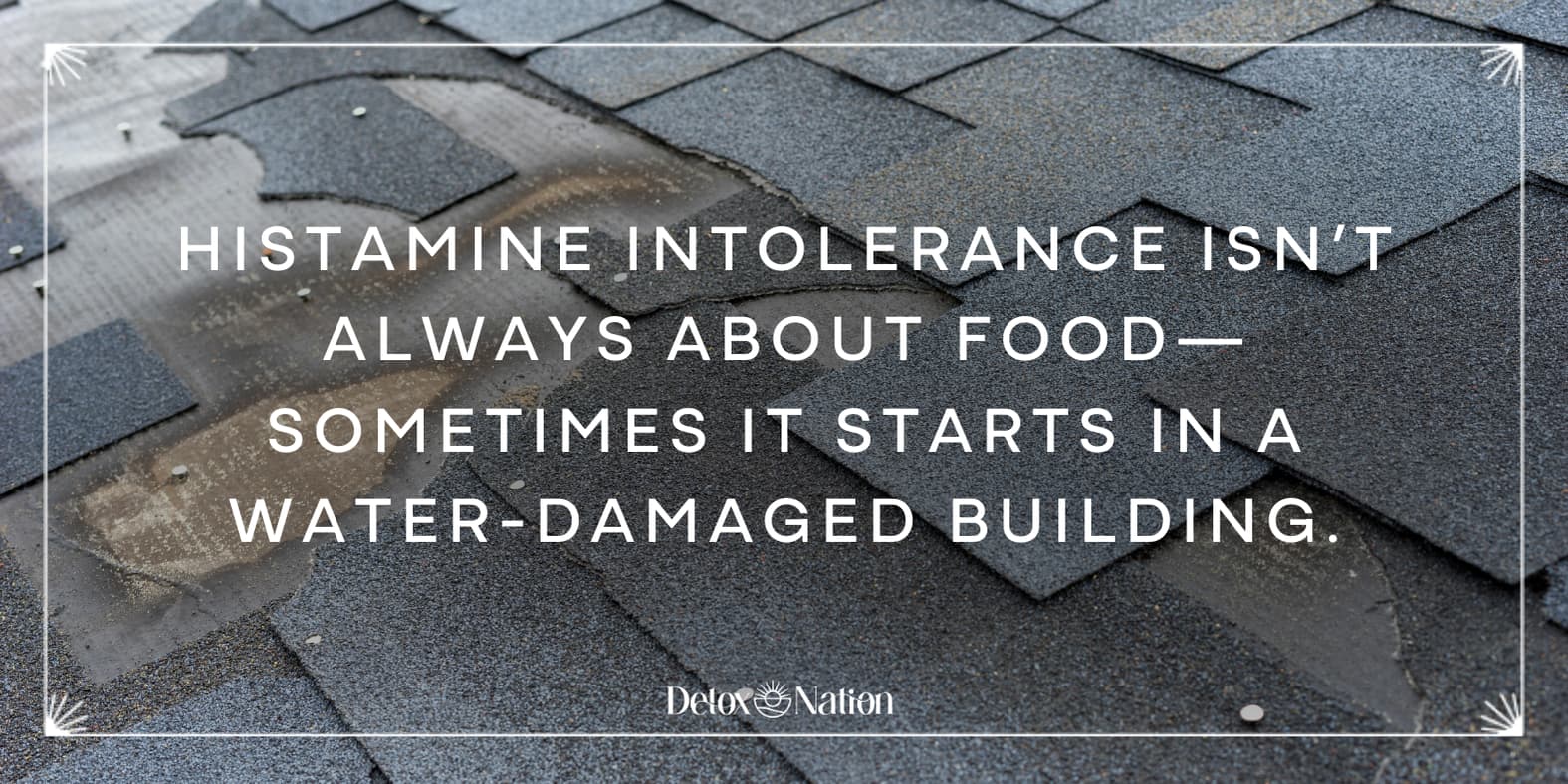
Why You Can’t “Think” Your Way Out of This
Mold toxins don’t just affect your sinuses—they:
- Cross the blood-brain barrier (31, 32, 33)
- Disrupt your nervous system’s regulation (31, 32, 33)
- Suppress mitochondrial function (your body’s energy factories) (34)
- Impair your ability to detox
- And over time? They turn your immune system into a short-fused fire alarm
That’s why people with mold exposure report symptoms like (31, 32, 33, 34):
- Brain fog and memory lapses
- Hormonal chaos
- Fatigue that sleep doesn’t fix
- Chronic sinus issues
- Heightened reactivity to food, smells, and stress
You might’ve even been diagnosed with anxiety, IBS, depression, ADHD, or an autoimmune condition.
But those are just labels.
Mold exposure can be the underlying root cause—and one that most practitioners miss.
Not Just In Your Environment—It Gets In You
Here’s the kicker: you don’t just breathe in mold and walk away.
Mold can colonize in your body and pump out mycotoxins.
Mold toxins disrupt your internal terrain—the ecosystem inside your gut, your cells, your immune system.
That’s where the real damage happens.
And that’s where the histamine intolerance trouble begins.
Because once mold gets into your system, it doesn’t just cause a reaction—it creates the perfect storm for chronic inflammation, histamine intolerance, and mast cell dysregulation.
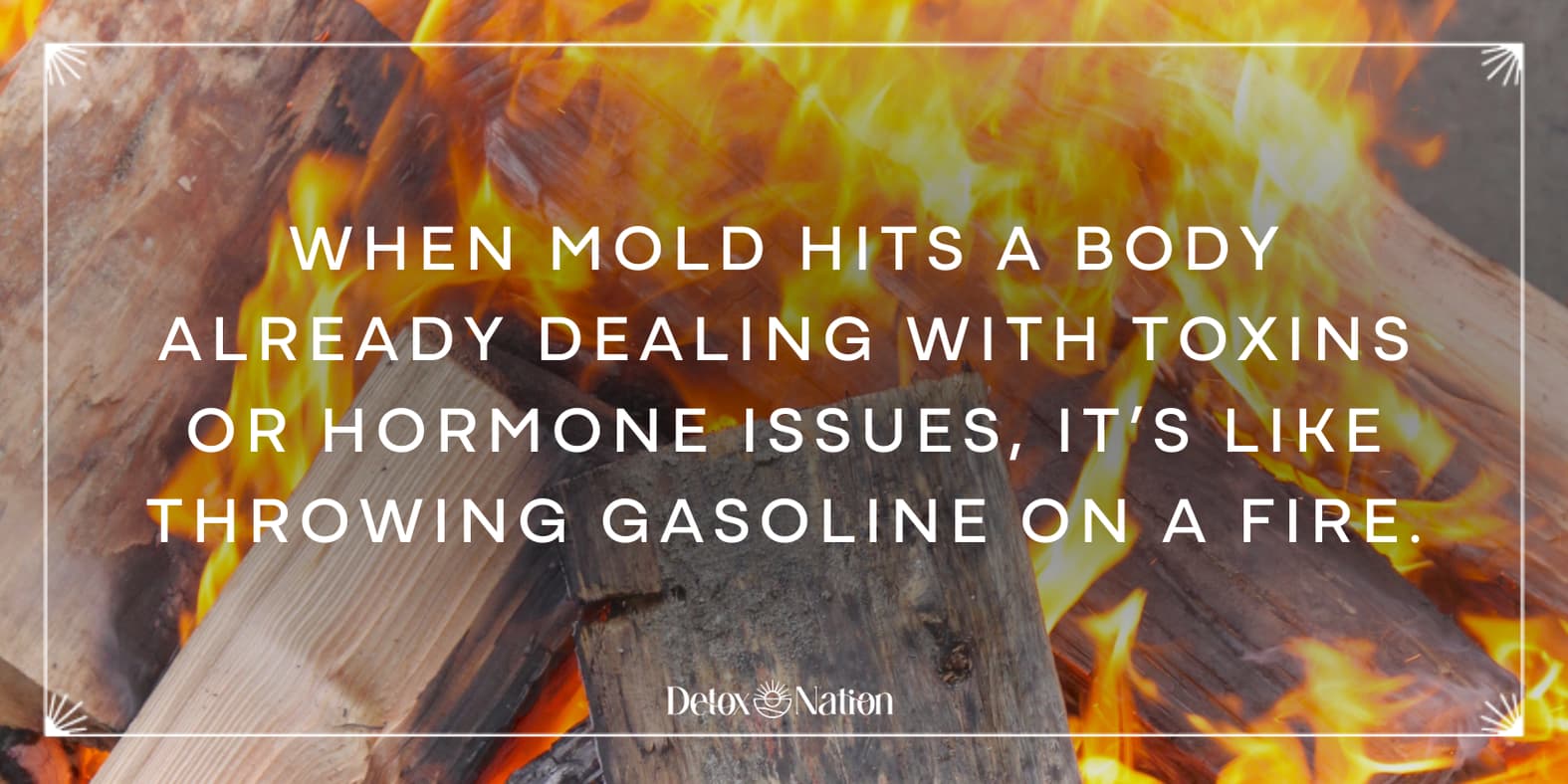
Meet the Mast Cells – Your Body’s Overzealous First Responders
Let’s talk about your mastocytes—those little bags of biochemical response sprinkled throughout your entire body.
They live in your gut, brain, lungs, skin, sinuses, bladder—basically anywhere your body meets the outside world (2, 3, 9, 12, 14, 15, 25, 26, 27).
Their job is to scan every incoming signal and decide whether it’s friend, foe, or full-blown emergency.
Only… when you’ve been exposed to mold, your mastocytes stop seeing nuance.
Everything becomes a threat.
What Do Mast Cells Do?
When functioning properly, mastocytes are your body’s early warning system. They:
- Detect danger (pathogens, toxins, injuries, stressors)
- Release mediators such as histamine, cytokines, prostaglandins, and leukotrienes (2, 12, 9, 14, 15, 27)
- Kickstart inflammation to protect you from real harm
Sounds great in theory.
But when the system gets dysregulated?
It’s like your internal fire alarm won’t stop screeching, even when the toast isn’t burning.
How Mold Activates Mast Cells (Directly)
Here’s where mold and mycotoxins come in hot:
- Mold suppresses your immune system (making it easier for parasites and other infections to take hold)
- Certain mycotoxins bind directly to mastocyte receptors (3, 6, 26)
- This binding triggers degranulation—the mast cells explode with inflammatory chemicals, including histamine
- Over time, this creates a state of chronic activation, not just an occasional “flare”
Your body’s trying to defend against toxins.
But since the mycotoxin assault is constant, it’s keeping you in a constant fight-or-flight state, flooding your system with histamine and inflammation.
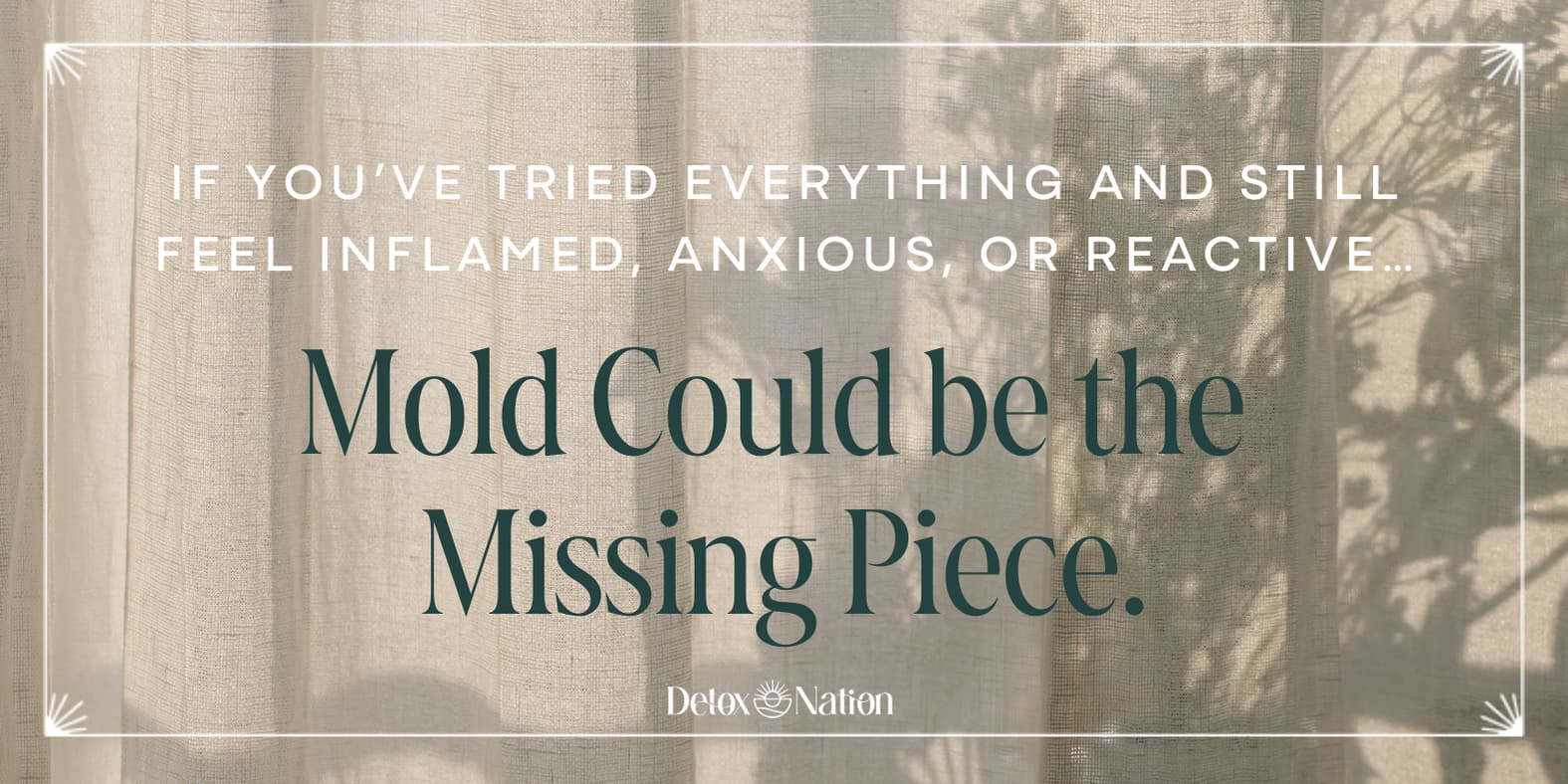
Why You Feel Like You’re Allergic to Everything
This chronic mast cell activation is what leads to symptoms that seem to come out of nowhere:
- Skin issues like flushing, itching, rashes, eczema, hives (4, 9, 10, 11, 14, 16, 17, 18, 21, 22, 24, 26, 28)
- Digestive chaos (abdominal pain, bloating, diarrhea, constipation, nausea, vomiting, reflux, etc.) after eating (3, 4, 5, 9, 10, 11, 14, 16, 17, 18, 21, 22, 23, 24, 28)
- Headaches or migraines that feel like weather reports (3, 4, 5, 9, 11, 17, 18, 21, 22, 23, 24, 26, 28)
- Heart palpitations, racing heart, low blood pressure, or dizziness for no apparent reason (4, 5, 9, 10, 11, 14, 17, 18, 21, 22, 23, 24, 26, 28)
- Insomnia, cue waking between 2–4 a.m. like clockwork (21)
- Respiratory issues like nasal congestion, asthma, wheezing, shortness of breath (4, 9, 10, 11, 14, 18, 21, 22, 24, 28)
- Brain fog and overwhelming fatigue (3, 18, 26)
- Muscle, bone, or joint pain unrelated to activity (18, 21)
- Menstrual irregularities (11, 18, 24, 28)
If this feels familiar, it’s not random.
It’s a pattern.
This is your body sending an SOS because the load is too high, and your drainage systems are jammed. And mastocytes—set off by mold—are a huge part of that picture (3, 6, 26).
The Chronic Loop: Mast Cells, Mold, and Histamine
Every time mastocytes dump their inflammatory load in response to mold (or other triggers), your histamine bucket fills up.
Without proper breakdown and drainage, the histamine accumulates.
And when your body can’t clear it fast enough, you’re stuck in a vicious cycle of reactivity.
Welcome to histamine intolerance (1, 5, 10, 11, 17, 21, 22, 23, 28)
Histamine Intolerance – When the Bucket Overflows
By now, you may be thinking, “Okay, Sinclair, I get that mold is triggering my mast cells… but why does it feel like everything I eat or breathe is making it worse?”
What Is Histamine Supposed to Do?
Histamine isn’t bad.
It’s a vital chemical messenger that helps with (1, 5, 8, 10, 15):
- Immune responses
- Stomach acid production
- Brain signaling (hello, focus and memory)
- Mitochondrial function
- Blood sugar regulation
- Wound healing
- Blood vessel dilation and permeability (aka letting immune cells get where they need to go)
It’s one of the ways your body says, “Hey! Something’s happening—let’s deal with it!”
But like any helpful system, too much of it at the wrong time causes problems.
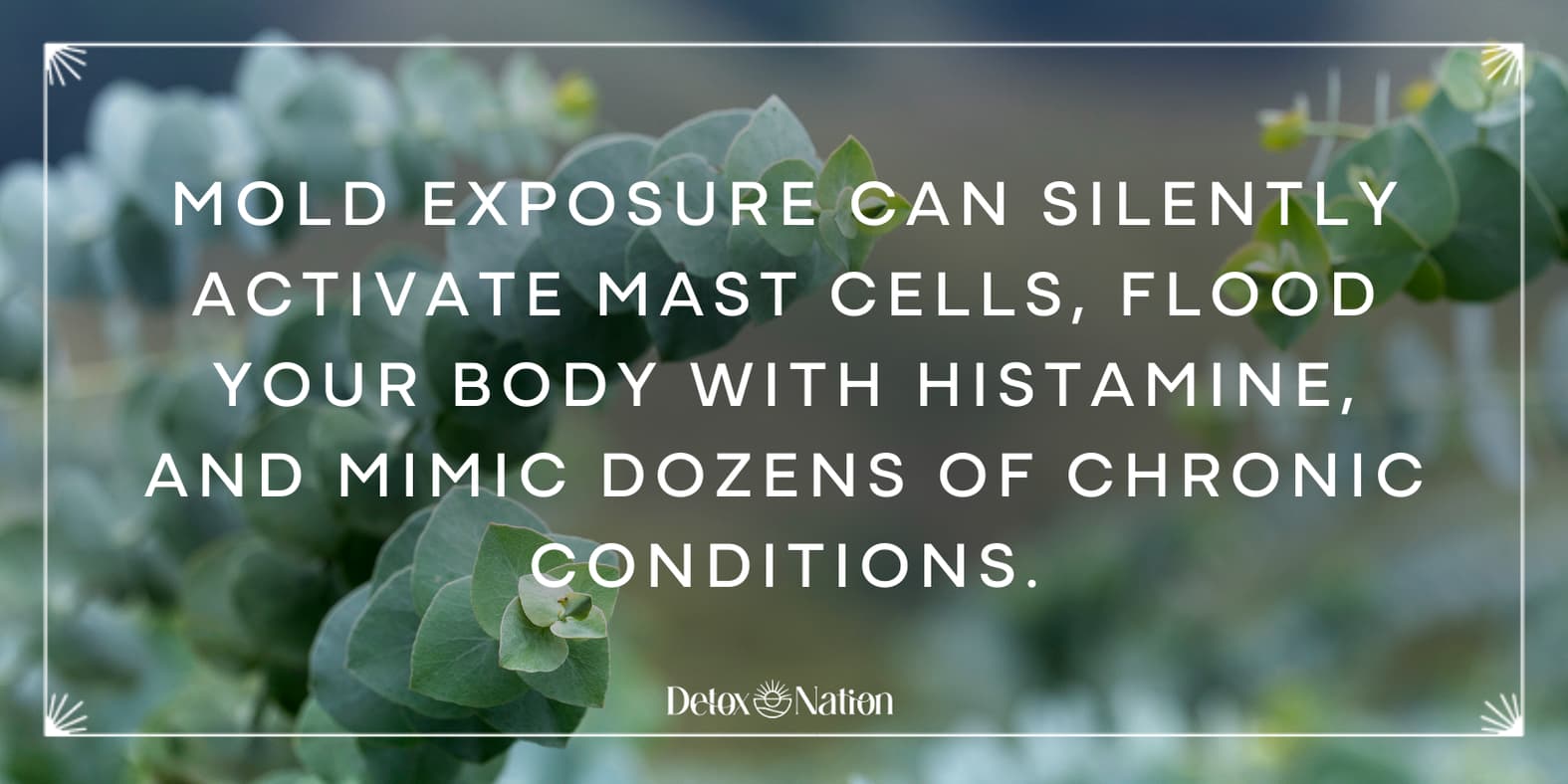
Why Can’t Your Body Break It Down?
Two main enzymes help you process histamine:
- DAO (diamine oxidase) – breaks down histamine in your gut
- HNMT (histamine-N-methyltransferase) – breaks down histamine in your tissues
When these enzymes are sluggish (which happens with mold exposure, gut damage, or genetic SNPs), histamine builds up in your bloodstream and wreaks havoc.
Common triggers that fill the histamine bucket faster:
- Mold exposure (and ongoing mycotoxin load)
- Gut dysbiosis and infections (we’ll get to that next) (21, 25, 28)
- Stress (yep, emotional stress spikes histamine)
- Estrogen dominance (ladies: your cycle affects histamine levels)
- High-histamine foods: aged cheese, wine, leftovers, kombucha, bone broth
- DAO-blocking meds: NSAIDs, antibiotics, antidepressants, antihypertensives (24, 28)
The goal isn’t to “block histamine”—it’s to support your body in clearing it properly, and to stop the overload at the source.
(And yes, we’ll talk about what’s blocking your DAO next.)
Mold and Dysbiosis: How Gut Imbalance Fuels the Fire
You’ve probably heard that “gut health is everything,” but here’s the part they often leave out: your gut doesn’t just digest food.
It also makes or breaks your ability to handle histamine.
And mold exposure?
It wrecks that system from every angle.
Mold Impacts Your Microbiome
When mycotoxins get into your system, they don’t just hang out in your liver.
They cause massive shifts in your gut flora, turning a once-diverse ecosystem into a dysfunctional, histamine-producing mess (29, 30).
How?
- Mycotoxins are antimicrobial, but not in a good way. They kill off beneficial bacteria, including those that help regulate inflammation.
- This leaves the door wide open for opportunistic, histamine-producing bacteria to overgrow—like Klebsiella, Morganella, Proteus, and E. coli. (8, 21, 22)
- These bugs don’t just live rent-free—they generate histamine as part of their metabolism.
So now your gut isn’t just failing to break down histamine—it’s producing extra histamine all day, every day (8, 10).
Dysbiosis Causes DAO Enzyme Breakdown
Here’s where things get fun (read: terrible).
- The DAO enzyme—your main histamine-busting tool—is made in your intestinal lining.
- Mold damages the mucosa, so DAO production plummets.
- At the same time, the overgrowth of bad bugs produces lipopolysaccharides (LPS)—toxins that further inflame the gut and suppress DAO.
This causes:
- More histamine intolerance in the gut
- Less DAO to break it down
- More permeability (leaky gut), allowing histamine and inflammatory junk into the bloodstream
- It’s a vicious cycle.
Food Reactions Multiply (and You Blame the Food)
This is when people start saying things like:
“I used to tolerate avocados, but now they make me feel awful.”
“I can’t even drink bone broth anymore without bloating.”
“I went on a clean diet and somehow got worse.”
That’s not food intolerance—it’s a histamine clearance issue.
And the problem isn’t what you’re eating—it’s what your gut can no longer handle.
When histamine-producing bacteria take over, and DAO is MIA, every high-histamine food becomes a symptom bomb.
Mold, Gut Chaos, and Histamine Overload
To summarize:
- Mold exposure leads to gut dysbiosis (29, 30)
- Dysbiosis causes an overgrowth of histamine-producing bacteria (8, 21, 22)
- Gut inflammation results in reduced DAO enzyme (16, 22)
- DAO suppression causes an inability to clear histamine (5, 21)
- And all of this equates to one seriously inflamed, reactive person who starts to fear food, social outings, and their own body
You don’t need a low-histamine life.
You need your gut terrain restored so your body can remember how to regulate itself again.
And to do that, we’ve got to talk about the mucosal barrier—because mold doesn’t stop with your microbes.
It also bulldozes the very lining that keeps your system stable.
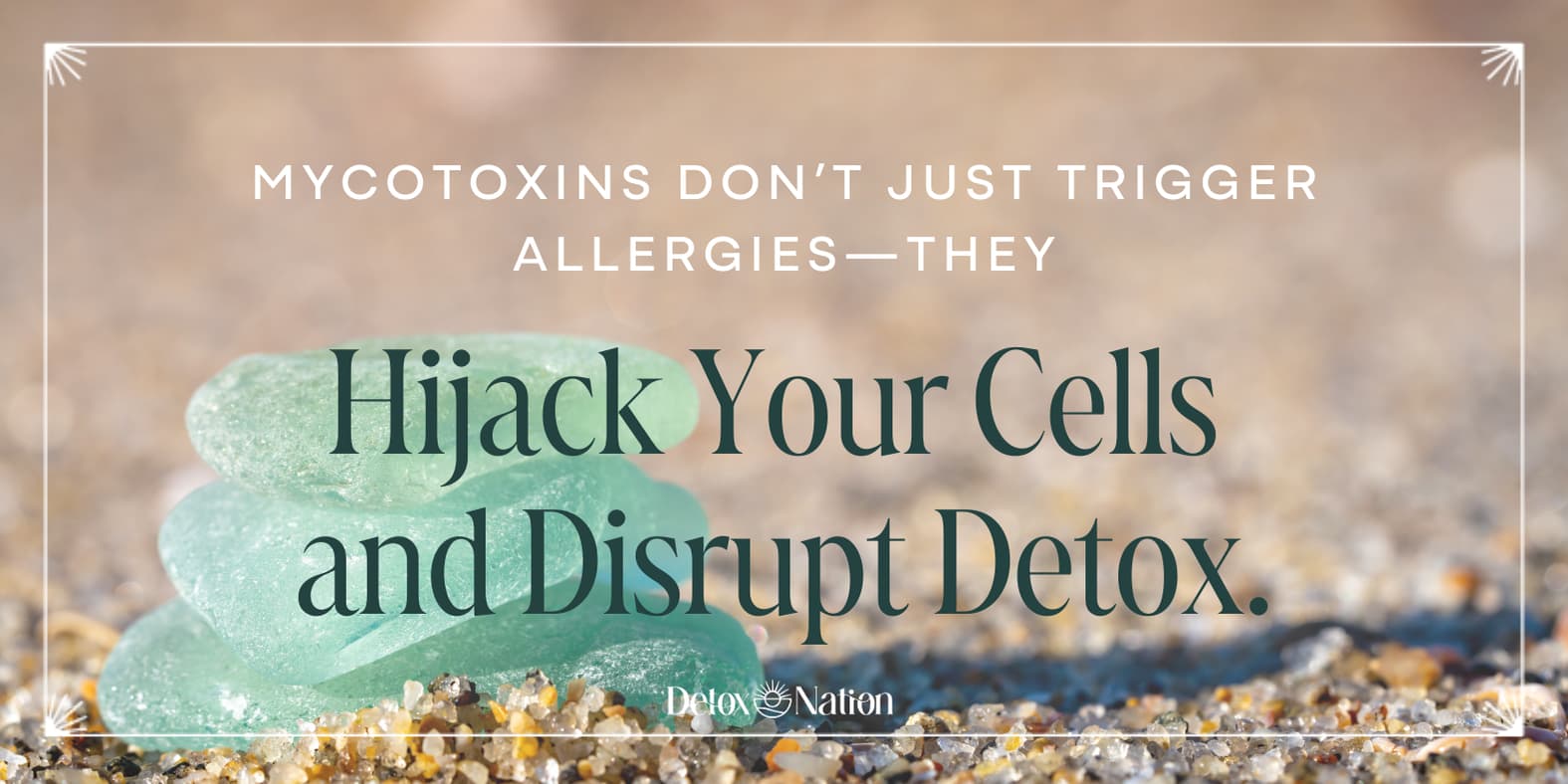
Mucosal Damage and DAO Suppression
Your gut lining isn’t just some passive tube that food travels through.
It’s a highly active, immune-rich barrier, about one cell thick, that determines what gets into your bloodstream—and what stays out.
And when mold toxins come knocking? That barrier breaks down fast.
What Is the Mucosal Barrier, and Why Should You Care?
The mucosal lining is like your gut’s security system. It’s home to:
- Tight junctions that keep the “doors” between cells shut
- Enterocytes (gut lining cells) that produce enzymes like DAO
- Immune cells that scan for invaders
- A protective layer of mucus that keeps pathogens at arm’s length
This whole setup is your first line of defense against inflammation, food reactions, infections—and yep, histamine overload.
How Mold Wrecks It
When mycotoxins hit your gut:
- They damage enterocytes, leading to reduced DAO production
- They disrupt tight junctions, making your gut leaky
- They cause oxidative stress and immune hyperactivation
- They thin or degrade the mucus layer, making it easier for pathogens and toxins to cross into your bloodstream (29, 30)
Suddenly, every bite of food, every natural bacterial metabolite, even your own hormones can trigger an inflammatory or histamine response.
Why This Tanks Your DAO Levels
Here’s the cruel irony:
- DAO is made by the very cells that are being damaged
- The more inflammation and tissue injury you have, the less DAO you produce (16, 22)
- Meanwhile, your histamine load is going up from both internal and external sources
This is how you end up with a high-histamine terrain and no capacity to drain it.
The key is to repair the mucosal barrier, support DAO production, and reduce the triggers (like mold) that keep inflaming your gut in the first place.
Once the terrain is restored, your body remembers what to do.
What Is MCAS, Really?
If you’ve made it this far, you’re probably starting to recognize a pattern.
You’re not just dealing with mold.
You’re not just dealing with histamine intolerance.
You’re living in the fallout of Mast Cell Activation Syndrome (MCAS)—whether you have a formal diagnosis or not.
MCAS in Plain English
MCAS isn’t an allergy.
It’s not a food sensitivity.
And it’s not “all in your head.”
The technical definition is complicated and has multiple criteria (9, 13, 14, 25, 27).
The person must experience typical symptoms of acute, recurrent, and systemic mast cell activation.
They must have a positive blood test within four hours of symptom onset (which can be realllly hard to coordinate).
Finally, they must respond to “anti-mediator therapy.”
That’s a lot to juggle.
An easier way to look at this is not as a diagnosis, but as metabolic disruption that happens when your mast cells—the frontline soldiers of your immune system—get stuck in fight mode for so long, they start releasing histamine with little provocation.
And because mast cells are everywhere, the symptoms can hit anywhere.
How Mold Can Trigger Mast Cell Activation and Metabolic Disruption
Let’s recap how mold pulls all the levers at once:
- Mycotoxins alter mitochondrial response, causing low energy (15)
- Mold exposure activates mastocytes directly (3, 6, 26)
- It also causes gut dysbiosis where histamine-producing bacteria thrive (29, 30)
- It damages the mucosal lining and DAO enzyme production tanks (16, 22)
- It locks your nervous system into a fight-or-flight loop, keeping everything inflamed
- Mycotoxins can trigger MCAS (3)
In other words, mold doesn’t just “make you sensitive.”It sets the stage for full-body immune confusion.
And Here’s the Hopeful Truth
You’re not doomed. You’re not too broken.And no—you don’t have to live in a bubble for the rest of your life.
Mast Cell chaos (that some call MCAS) is a pattern of dysregulation, not a permanent identity.
Once you address the root causes—especially mold and toxic load—and give your body the safety, support, and space it needs, your mast cells will calm down.
Your reactions will fade.
Your tolerance will come back.
And so will you.
The Fix – Calm the Chaos and Restore Flow
Now that we’ve named the dragon—mold, histamine overload, mast cell chaos—what do we do about it?
Let’s start with what not to do:
- Don’t panic-order DAO supplements and antihistamines
- Don’t try to muscle through a mold detox with 12 binders and no pooping
- Don’t fast-track your way into a Herx reaction and call it “cleansing”
This is not about forcing your body to heal.
It’s about setting the conditions so your body can do what it’s already wired to do: repair, regulate, and restore.
Nervous System First, Always
You cannot detox in fight-or-flight.
You’ll just retraumatize your system and inflame your cells even more.
Before anything else, focus on nervous system safety:
- Vagal nerve support – humming, binaural beats, extended exhale breathing
- Body-based grounding – somatic tracking, gentle movement, weighted blankets
- Safe inputs only – no scary rabbit holes, no gaslighting practitioners, no pushing through, and coregulate with loved ones when possible
Remember: healing only happens in parasympathetic.
Open Drainage Pathways
Think of your body like a house.
If you start deep cleaning before opening the windows and unclogging the drains, the gunk just gets recirculated.
Drainage includes:
- Bowel regularity – pooping every day (minimum!)
- Liver + bile flow – bitters, castor oil packs, bile builders
- Lymph support – self lymphatic massage, rebounding, gentle movement
- Kidneys + hydration – minerals, distilled water, herbal teas
When your detox pathways are open, histamine can actually leave the building.
Support Histamine Breakdown (Gently)
Once you’re draining and regulated, it’s safe to support histamine clearance:
- Low-histamine diet – short term—not forever
- Gut terrain repair – healing the mucosal barrier and reducing histamine-producing bugs
- DAO cofactors – B6, vitamin C, magnesium, copper (bioavailable)
- Methylation support – folate (NOT folic acid), B12, betaine, glycine
This isn’t about restriction. It’s about creating space for your body to breathe again.
Lower the Mold Load
Yes, mold is a big deal. But you don’t have to get overwhelmed. Start where you are:
- Get out of exposure if you can. If not, air purification, dehumidification, and safe remediation are your allies. Most air filters cannot handle the small particle size of mold spores, so do your research! We teach all of this Healing Labs and Rapid Gut Reset.
- Bind gently: start with low-dose binders with drainage support
- Sweat, sauna, or skin brushing once detox is flowing
- Support mitochondrial function before going after mold head-on
You’re Not Broken—You’re Brilliantly Adaptive
You’re not broken.
Your body is brilliantly adaptive.
You’ve been living in a world that bombards your biology with toxins your ancestors never encountered.
Mold exposure isn’t just inconvenient—it’s biologically destabilizing.
Your symptoms? They’re not random. They’re a logical response to the stresses your body has experienced.
The fatigue, the reactivity, the bloating, the insomnia, the anxiety after meals—none of it is in your head.
It’s in your mitochondria, your mucosal lining, your nervous system, and your histamine pathways.
And that means it’s not just explainable—it’s fixable.
Not with one supplement.
Not with another elimination diet.
But with the right sequence—starting with safety, drainage, and regulation.
Because once your body feels safe again, healing isn’t just possible—it becomes inevitable.
Ready for Your Next Step?
You don’t have to figure this out alone.
Whether you’re still stuck in exposure, already on your fifth round of binders, or just considering mold and histamine, there’s a next right step for you.
Think mold might be behind your symptoms?
Take the free Mold Self-Assessment Quiz to find out where you are in the process—and what your body’s trying to tell you.
Ready to start healing?
The Mold Detox Program Healing Lab runs the labs you need, and gives you a step-by-step path to clear toxins, calm your immune system, and reclaim your energy—without triggering your symptoms.
Your body hasn’t failed you.
It’s been surviving and waiting for conditions to change.
Let’s change them—together.
Ready To Start Healing?
Find out where you are in the process—and what your body’s trying to tell you.
Take the mold assessmentFAQs:
- Why am I suddenly reacting to foods I used to tolerate just fine?
Because your histamine bucket is full. Mold exposure, gut damage, and stress reduce your ability to break down histamine—so even “healthy” foods can trigger reactions when your system is overwhelmed. - What’s the connection between mold and histamine intolerance?
Mold and its toxins damage your gut lining, kill beneficial bacteria, suppress DAO (your histamine-clearing enzyme), and directly activate mastocytes. That combo floods your system with histamine—and makes you reactive to everything. - Is this histamine intolerance or MCAS—or both?
Histamine intolerance is often a symptom of Mast Cell Activation Syndrome (MCAS). MCAS is the pattern of chronic, system-wide reactivity when these cells lose their ability to regulate. You don’t need a formal diagnosis to start calming the chaos. - Why do I feel worse with bone broth, kombucha, or leftovers?
They’re high in histamine. When your DAO enzyme is suppressed (from mold, dysbiosis, or gut inflammation), even beneficial foods can tip your bucket into symptom territory. - Can mold really affect my gut this much?
Yes. Mold toxins damage the mucosal barrier, disrupt the microbiome, lower enzyme production, and create the perfect storm for gut permeability, inflammation, and histamine overload. - My labs are normal. Does that mean mold isn’t the problem?
Not at all. Most conventional labs don’t test for mold toxins or histamine cell mediators. “Normal” labs don’t mean your body isn’t struggling—they just mean the wrong things were measured. - Can I fully heal from this, or will I be reactive forever?
Yes, you can heal. Your body is brilliant—it’s just overwhelmed. When you support detox, restore your terrain, and remove the stressors like mold, your tolerance improves. This is fixable.

